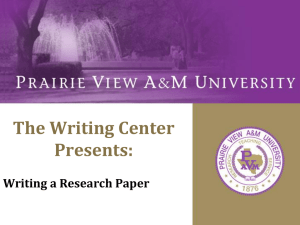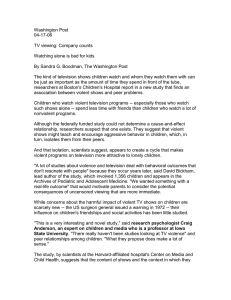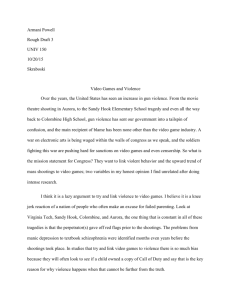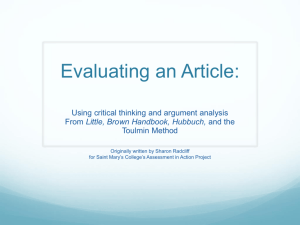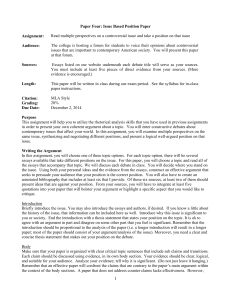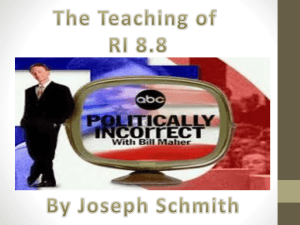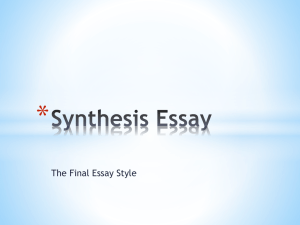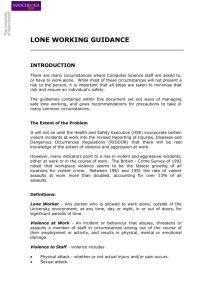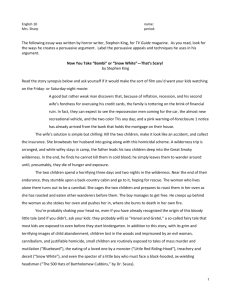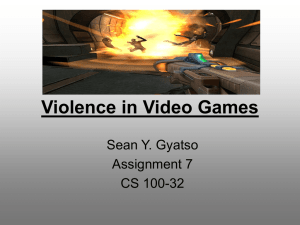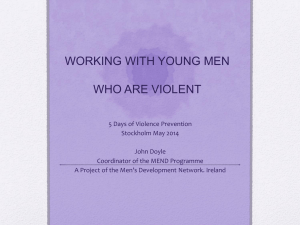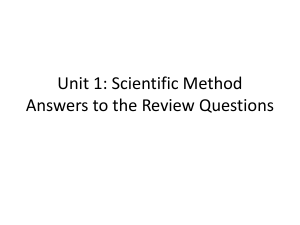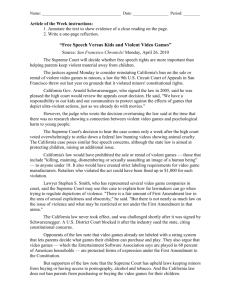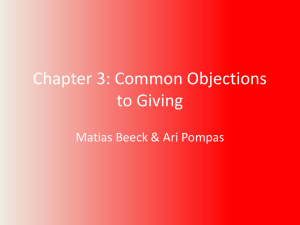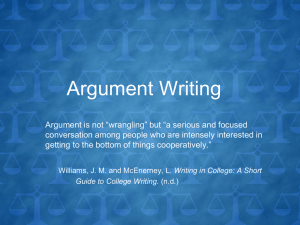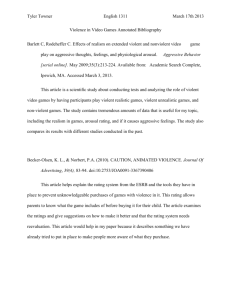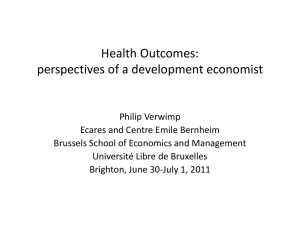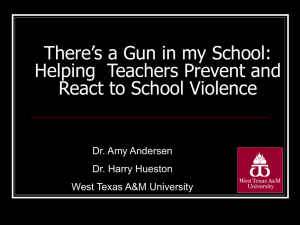Writing a Research Paper - Prairie View A&M University
advertisement
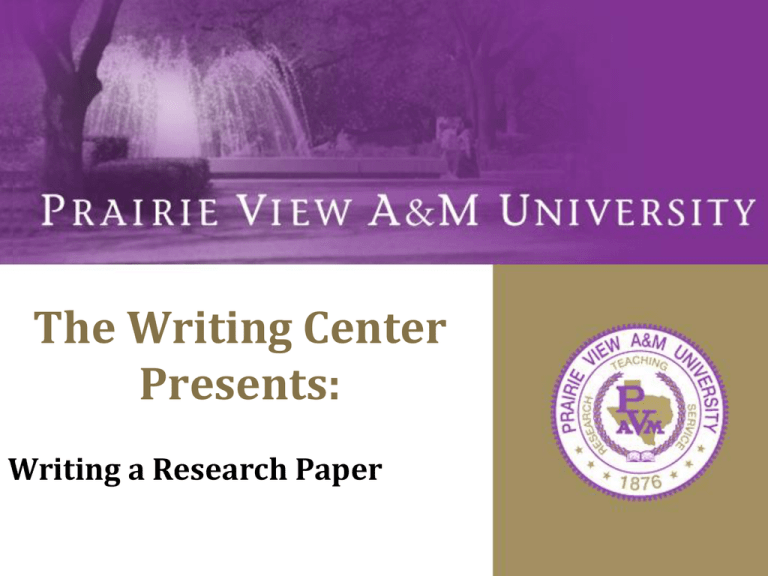
The Writing Center Presents: Writing a Research Paper Planning Your Project • Develop a research question – Pick a topic that you care about – Find a question, who’s answer solves a problem. Now, make the reader care about the problem. – List all your interests. What on this list can you research? Narrowing Down Your Topic • Your research topic should be broad enough to allow you to research yet narrow enough to be able to focus that research. – Gun control laws in America – How Gun control laws effect Hispanic teenagers, aged 13-16, of El Salvadorian decent, in the Southwest area of Houston. – How gun control laws effect Hispanic teenagers in the greater Houston area. Developing Research Statement • Topic: I am studying ________ • Question: because I want to find out what/why/how _________ • Significance: in order to help my reader understand ________ Research Plan - Develop research questions. - Having a list of questions enables you to begin research as well as serving as a rough outline of your paper: - Example questions include: - What is the history of my topic? Structure and composition How is your topic categorized? What if? What do people who support my argument say? What about those who oppose my stance? Beginning Research • Primary sources: your research • Secondary sources: research reports that use primary and secondary sources. These sources tend to be written for scholarly and professional audiences • Tertiary sources: Everything else. These sources are good for “getting to know your topic” but the reader will not trust the credibility. Annotated Bibliography There are benefits to an annotated bibliography beyond getting a grade: - A backup for your research. - You have a note of what each article is about. - A tool for managing your sources. Research Anxiety - All researchers run into a feeling that they “are in over their head.” - This usually occurs when you have collected research quicker than you can go through it. - Regroup and focus back on your research statement. - Take the time needed to organize your research. Questions to Ask When Developing an Argument 1. 2. 3. 4. What is my claim? What reasons support my claim? What evidence supports my reasons? Do I acknowledge alternatives/complications/objections, and how do I respond? 5. What principle makes my reasons relevant to my claim? The Research Argument Your Claim is because of a Reason which is based on Evidence. In other words: “TV violence can have harmful psychological effects on children because those exposed to lots of TV tend to adopt the values of what they see. Constant exposure to violent images makes them unable to distinguish fantasy from reality. Smith (1997) fount that children between the ages of 5-7 who watched more than three hours of violent television a day were 25 percent more likely to say what the saw on television was “really happening” (p. 112). Acknowledging Objections • Every argument has a counterargument. That is okay. However, you must address it. • “TV violence can have harmful psychological effects on children because those exposed to lots of TV tend to adopt the values of what they see. Constant exposure to violent images makes them unable to distinguish fantasy from reality. Smith (1997) fount that children between the ages of 5-7 who watched more than three hours of violent television a day were 25 percent more likely to say what the saw on television was “really happening.” Of course, some children who watch more violent entertainment might already be attracted to violence. But Jones (1999) found that children with no predisposition to violence were as attracted to violent images as those with a violent history. (p. 113). Practical Claim - A practical claim is actually two claims in one. - Claim 1 – There is a problem and causes to the problem. - Claim 2 – There are ways to fix the problem In a practical claim the reader expects the author to explain the following - Why is your claim feasible and how can it be implemented? - What is the cost? - Will this create a bigger problem than it solves? - Why is yours the best solution? Using Evidence - Report evidence accurately - Provide sufficient, representative evidence - Remember one quote, or one number does not prove anything - Be precise - Careful of key words such as: many, much, large, little, costly, low probability, etc. Question Yourself • We are at times so invested in our work that we don’t recognize our problems. – Does my argument make sense? – Where are the flaws in my argument? – Am I establishing credibility? – Are my sources credible? – Do I need more evidence? Introductions • Most introductions have three common elements – Context + Pattern + Response Steps to Writing an Introduction 1. Establish common ground 1. Establish a shared understanding between reader and writer. 2. State your problem 1. State the condition. 1. “the real problem is” or “the data did not reveal…” 3. State your response 1. State the main point of your solution Conclusions • Many students claim conclusions are the most difficult part of the paper. – Restate main point – Add a new significance – Call for more research – Close with an “echo” of the introduction Style • Vary your sentence structure. • Passive voice – “The test was failed by over one-third of the students.” – “One-third of the students failed the test.” • Avoid ambiguous language – He, she, the, the people, researchers, etc • Get to the point. – A research paper should not be “fluffy,” it should get to the point. “Thou Shalt Not”: Ethics • • • • • • Plagiarize Misreport sources, invent data or results Submit data that is inaccurate Conceal objections Distort opposing views Destroy data An Ethical Problem • Especially in qualitative research it is important to remember that our stories are not our own. Thus, make sure that you protect the identities of those you are researching if they ask. • If you are conducting research, go through the appropriate channels to collect data. Consequences of plagiarism • Failing the assignment • Failing the class • Suspension/Expulsion. All Information Obtained From: • Booth, W., Colomb, G., Williams, J. (2008). The craft of research (3rd ed.). Chicago, IL: University of Chicago Press. The Writing Center Contact Info Prairie View A&M University Writing Center Hilliard Hall, Room 121 (936) 261- 3724 pvamuwritingcenter@gmail.com • writingcenter@pvamu.edu • http://www.pvamu.edu/pages/4399.asp
